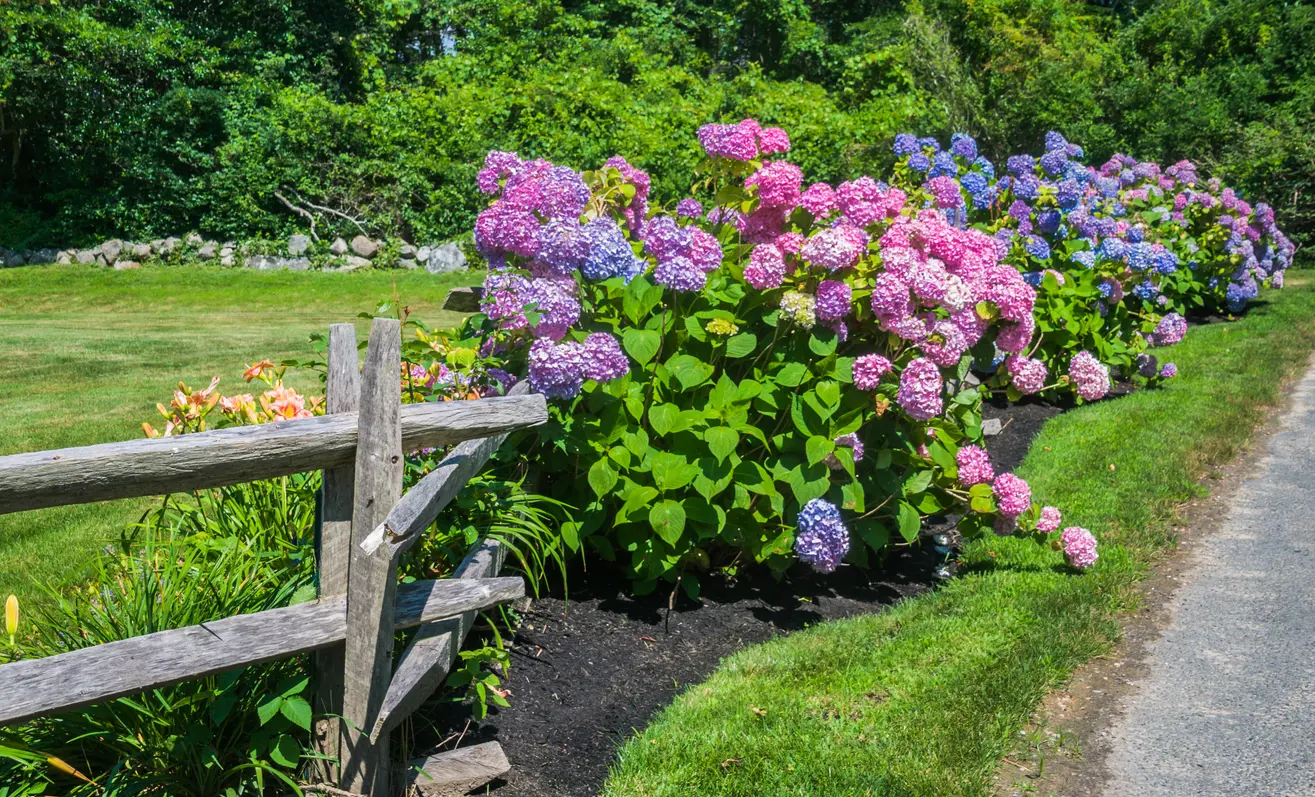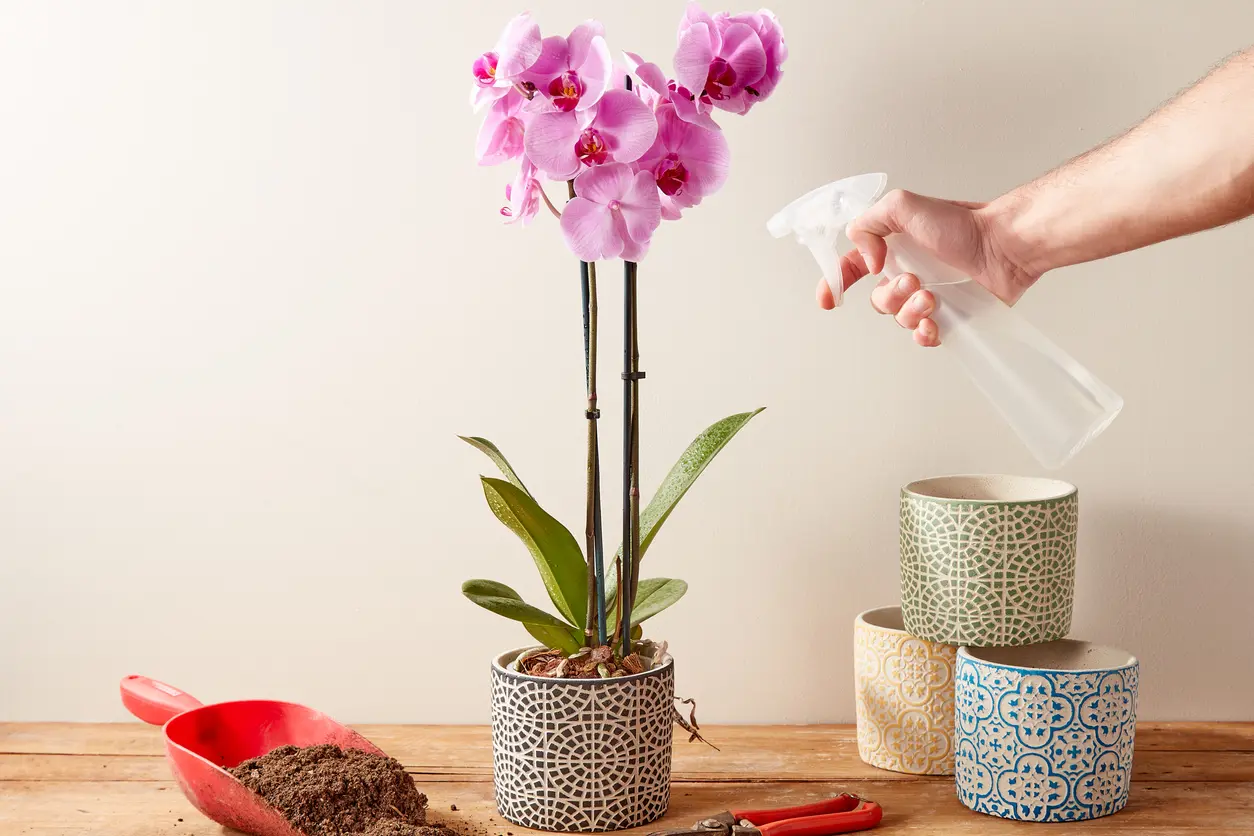
Orchids draw your attention with their colorful, large blossoms and refined foliage. Yet once you've picked one up on impulse from your local nursery or plant shop, you're dealing with a houseplant that needs specific care to flourish.
Get all the details you need to learn how to grow, care for, and bloom orchid plants at home with minimal specialty equipment.
What Makes Orchid Care Tricky for New Plant Owners?
Orchids aren't the easiest houseplants, and myths abound regarding their care, but that shouldn't scare you from getting one. When you provide the right care— including specific soil pH levels, bright indirect light, and higher humidity than many other houseplants—you can help almost any orchid thrive in your home.
Common Types of Orchids and How to Tell Them Apart
There are hundreds of genera and thousands of species of orchids, but the vast majority of those sold in grocery stores or plant shops fall into one of five genera. The first step in orchid care for beginners is identifying your plant.
1. Phalaenopsis
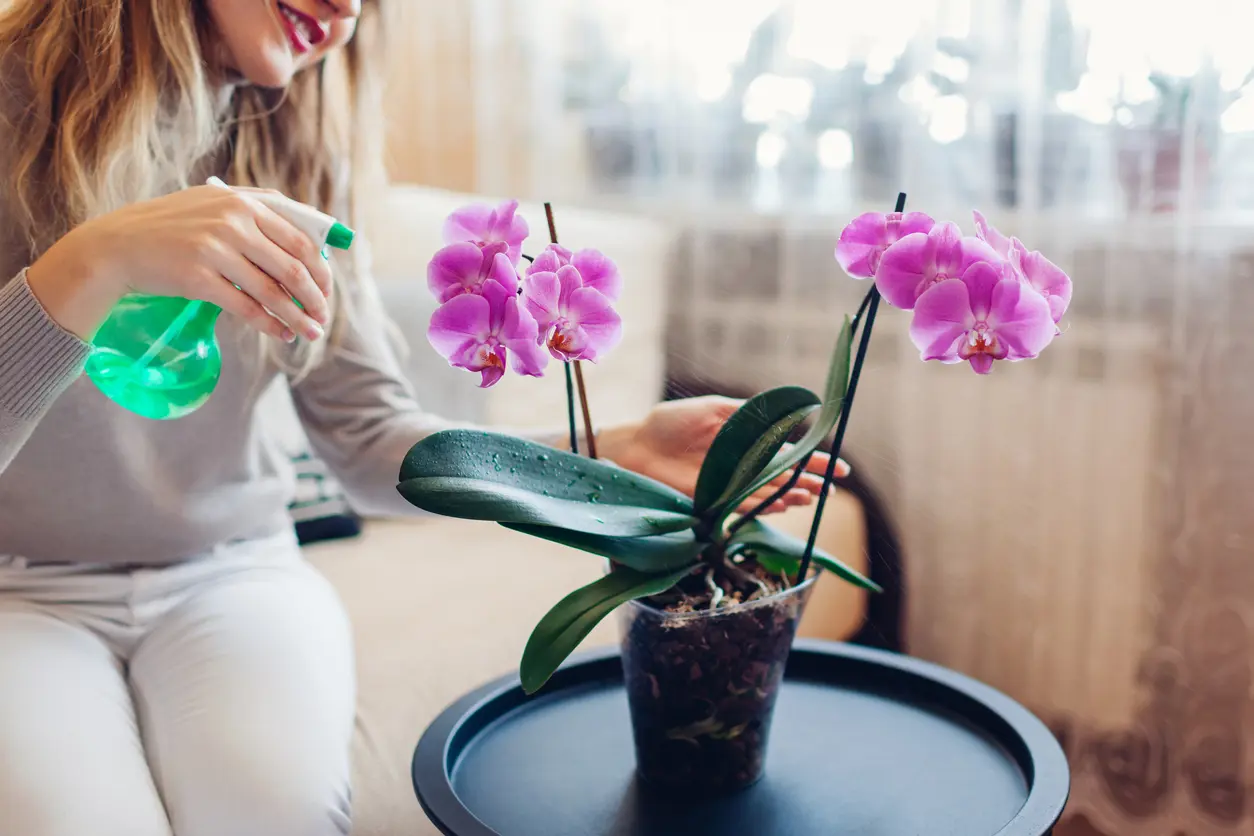
Distinguishing Features:
Also known as moth orchids, these feature large and colorful flowers. The foliage is the easiest way to identify this genus. You'll see thick, broad, and dark green leaves that overlap slightly. Healthy plants have 6 to 8 leaves. The flowers and leaves emerge from a single stem, with the flowers suspended on an arched section.
Flower Description:
The flowers have a moth-like shape with two large upper petals, two smaller lower petals, and often a thin top and bottom petal. The colors range from pure white to cream, purple, pink, and variegated.
Care Preferences:
Bright yet indirect light, temperatures above 55°F (13°C) and below 80°F (26°C), regular watering and slightly damp soil, humidity between 50% and 80%, and balanced fertilizer twice a month during blooming.
2. Dendrobium
Distinguishing Features:
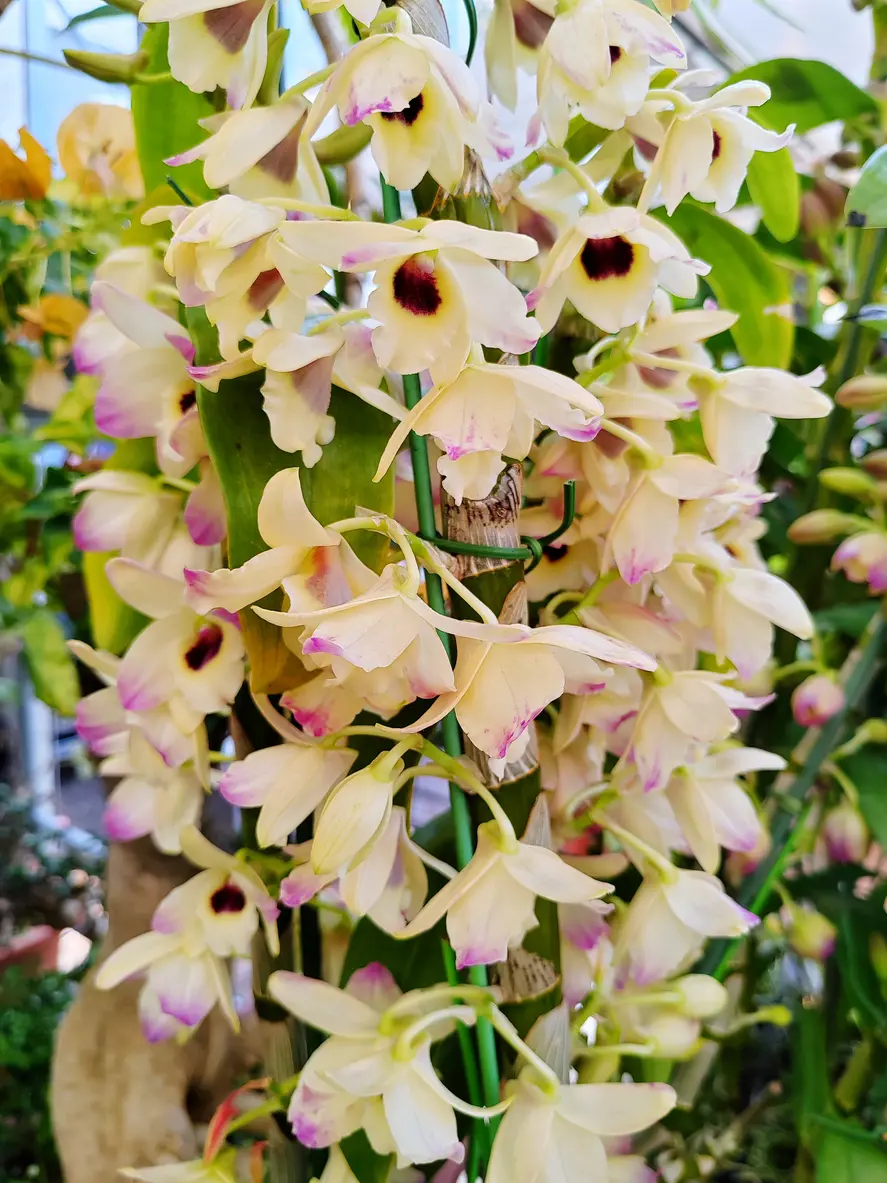
Dendrobium orchids feature slightly smaller flowers with curled, twisted, or spiraling petals. They have up to 6 lighter green, narrow, waxy leaves directly on a single stem that also supports the flowers. Most Dendrobium orchids produce a cluster of flowers all at once.
Flower Description:
More cupped and smaller than Phalaenopsis blooms, these orchids are often two-toned with shades of pink, white, blue, yellow, maroon, and violet.
Care Preferences:
Bright and slightly more direct light, higher temperatures above 65°F (18°C), weekly watering with dry soil between waterings, humidity levels between 50% and 70%, and nitrogen-heavy fertilizer.
3. Oncidium
Distinguishing Features:
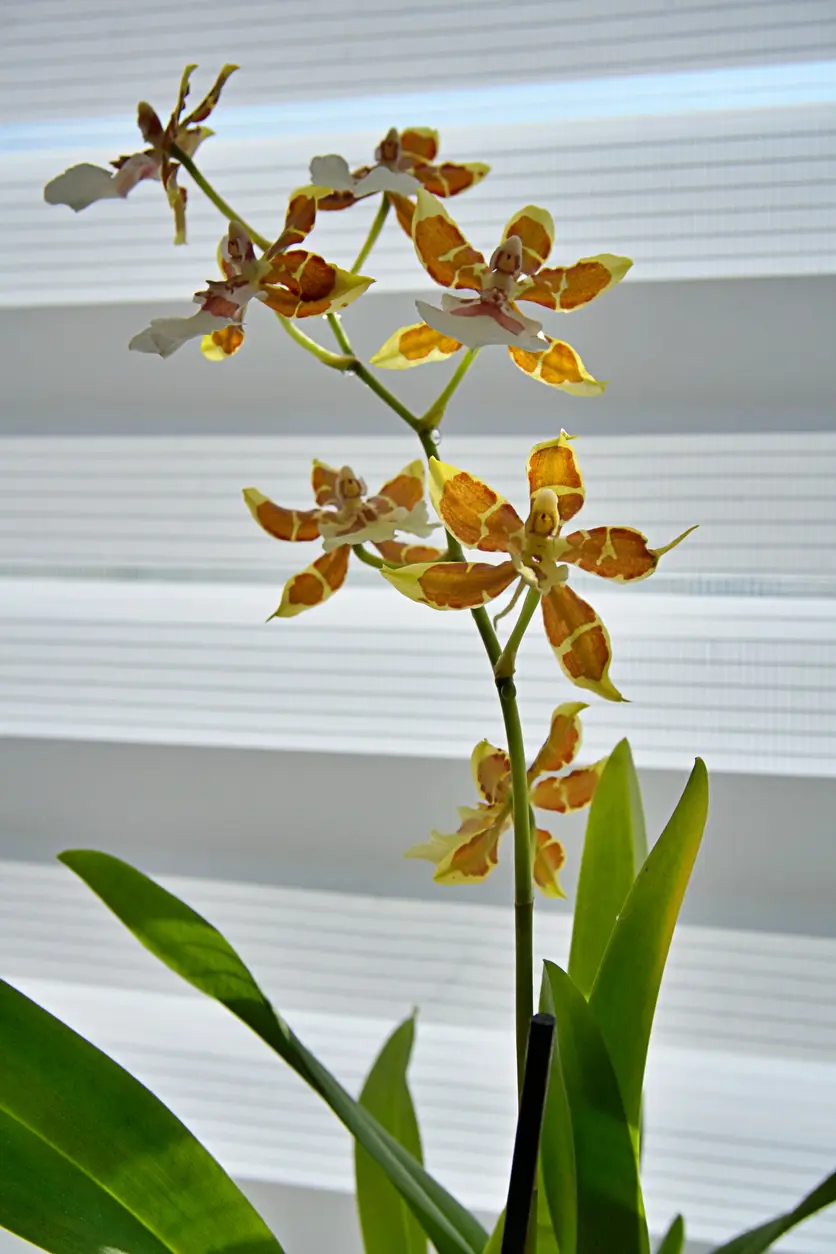
A big, round pseudobulb at the base of the main stem is the easiest way to identify Oncidium orchids. A few species don't feature it, so in those cases, you'll need to use the flower's skirt-like shape to identify them.
Flower Description:
While this genus encompasses flowers of varying sizes and colors, they all feature a rounded shape on the inner petals with two lobes. It's reminiscent of a lady's skirt, hence the common name Dancing Lady orchid. Gold is a common color, along with deep red, maroon, hot pink, and white. It's often very fragrant.
Care Preferences:
Bright but indirect light, temperatures between 65°F (18°C) and 85°F (29°C), humidity between 40% and 70%, balanced fertilizer once a month during blooming, and watering weekly to bi-monthly with the soil almost dry to the touch.
4. Cymbidium
Distinguishing Features:
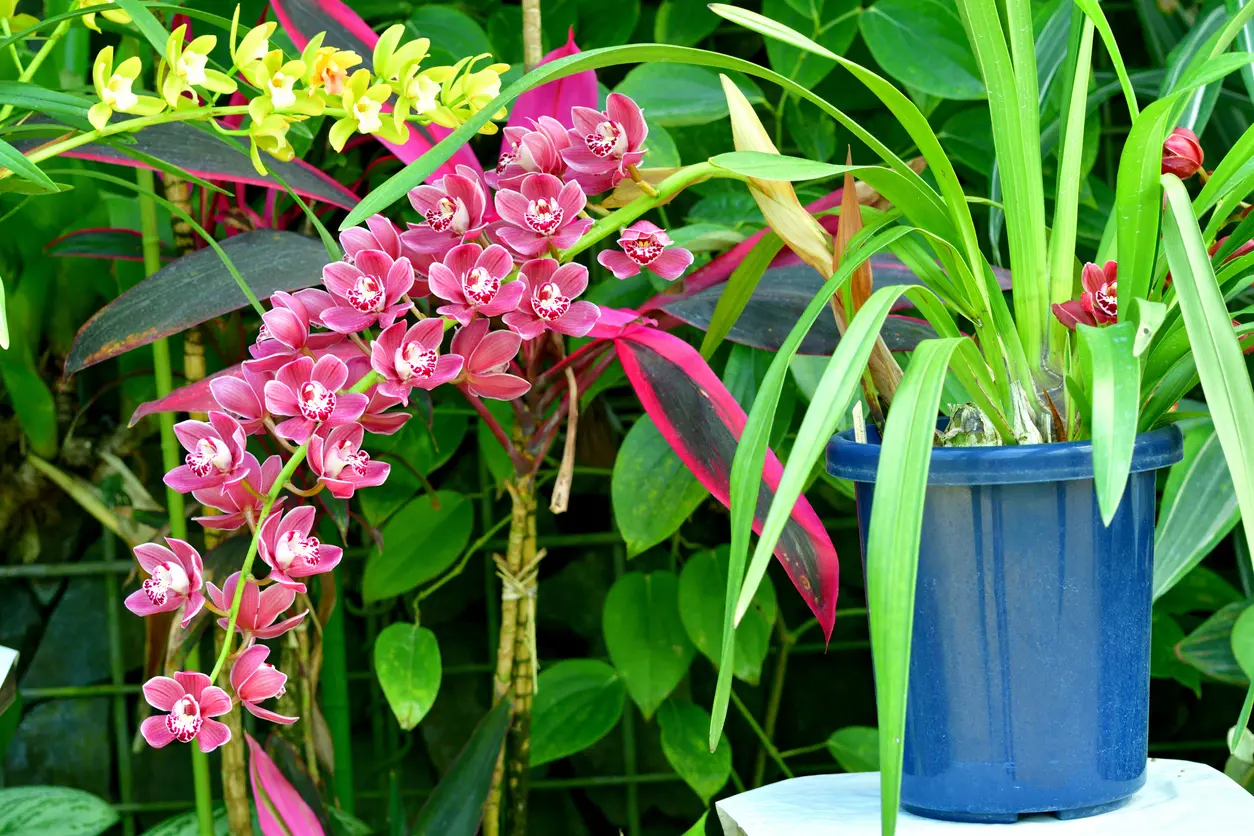
Unlike the mono-stems of many other genera, Cymbidium orchids tend to feature a split stem with one flower per tip. Other varieties produce a showy and curvy cluster. The stems also tend to grow angled or sideways rather than straight up. They have narrow, soft, and numerous leaves that are larger than many other orchids. The outer petals, or tepals, are cupped or twisted inward, although they can take many shapes.
Flower Description:
There's a lot of diversity in this genus, but most varieties feature striped petals or contrasting colors on the inner lips. The long, curving, and soft leaves of these orchids are easier to use to identify them than the flowers in most cases. Some produce between 10 and 25 flowers at once. Many varieties are fragrant.
Care Preferences:
Bright but indirect light, temperatures above 35°F (2°C) and below 85°F (29°C), humidity above 60%, always moist soil with regular watering, balanced fertilizer every other week during the growing season, and infrequent re-potting.
Ideal Growing Conditions for Common Orchids
Most orchids thrive in relatively similar conditions. They need a strong source of light that isn't direct, to avoid burning the leaves. Sheer curtains or shades work well to soften direct sunlight. Plant lights are safe to use 12 to 14 inches (30 to 35 cm) from the leaves without risk of burning and often provide the best light for orchids.
Pebble trays are often recommended for orchid care, but they don't provide enough humidity in most situations. A small plant humidifier is a much more reliable way to add humidity to your orchids without dealing with damp conditions in your home.
Potting Medium Preferences and Container Tips
Orchid potting mediums are made with decomposed bark that is left in larger chunks, allowing for good drainage. This mimics the natural environment where these flowers thrive, which are holes and crotches of mature jungle trees where their own material decomposes to form a soil-like substance.
Most commercial orchid soil mixes made with large chunks of bark will work just fine, especially for the five most common orchid genera. Unless used sparingly, moss products, especially peat moss, are usually too fine and hold onto moisture too long for successful growth.
Orchids need containers with ample drainage. Slot-sided pots are recommended for the types that prefer to dry out between waterings. For orchids that prefer to stay moist, flower enthusiasts still often use classic terracotta pots.
Orchid Watering Guide to Prevent Root Rot
Cymbidium, Dendrobium, and Phalaenopsis orchids all want to stay at least a little damp between waterings. Oncidium plants need to dry out more because they store a lot of water. Orchids almost all feature thick, white-colored roots that are designed to resist drying out. Yet they can also start to rot if they're too wet for too long, even for species that prefer to stay damp.
Follow the recommended watering schedule, always checking the soil rather than just basing it on time. Conditions in your home can change without warning, leading to slower or more rapid drying. Instead of pouring a small amount of water from the top that might not reach the roots, fill a container with distilled or rainwater. Dip the entire container in, letting it sit for a minute or so to let the soil absorb plenty of water. Slotted containers also help with this process.
Fertilizing Orchids the Right Way
Pay close attention to both the fertilizer preference and the frequency recommended for your specific genus of orchid.
- Phalaenopsis needs balanced fertilizer twice a month.
- Dendrobium wants a nitrogen-focused formula once a month when blooming.
- Oncidium needs only a single monthly dose of balanced orchid food.
- Cymbidium needs plenty of fertilizer even when it's not blooming.
Steps for Re-potting Orchids
- Stop watering for anywhere from 3 days to 2 weeks before re-potting, depending on the usual water requirements, to let the roots dry a little and form protective calluses.
- Prepare a new container with fresh orchid growing medium, preferably with no fertilizer mixed in.
- Remove the orchid carefully from its pot, working it from side to side to loosen the large roots without damage.
- Brush some of the worn-out growing medium from around the roots if necessary, taking care to handle them as little as possible.
- Dampen the new growing medium and gently add it around the root ball, taking care not to bury any roots or pseudobulbs that were growing at the surface.
- Resume the normal watering schedule after about 3 days.
How to Make Orchids Bloom Again
Each orchid has a specific bloom cycle. Some need light manipulation, but almost all need a cool evening temperature and a relatively warm daytime temperature to bloom. Mimicking these conditions at home by ensuring at least a 10- to 15-degree (5- to 8-degree C) difference from day to night is often enough to trigger new blooms.
Some species need a long break of months to recover from blooming, especially those in the Phalaenopsis, Cymbidium, and Dendrobium genera. Oncidium orchids tend to bloom without a break when they're given the right care.
In addition to creating a temperature differential from day to night, you can also try tricks such as:
- Ensure the orchids are getting plenty of bright light for a minimum of 12 hours a day but not more than 14 hours at a time.
- Raise the humidity with more than just a pebble tray.
- Fertilize the orchid at the recommended intervals, providing plenty of energy for bloom production.
- Remove any spent flower spikes or fading flowers, especially for orchids that can continuously bloom.
- Treat any signs of disease or pests to reduce drains on the orchid's energy.
- Give the plant a few months to push out a new flower spike since the bloom cycle is different for each variety.
Common Orchid Issues and How to Solve Them
Burnt Orchids
If you see your orchid's leaves turning red, drying out rapidly, or falling off without warning, check the light conditions. Direct light for even half an hour can burn the more light-sensitive types.
Lack of Light
Orchids that don't get enough light also tend to drop leaves, fail to flower, or grow very slowly. Try improving the conditions with a plant light since it's less likely to cause burning than a bright windowsill.
Orchid Losing Leaves
Many plant owners panic if their orchids lose their leaves, especially if they drop all or most of them. However, for many varieties, this is a common part of both going dormant over the winter and preparing to bloom again. Don't give up on a plant that drops leaves but still has strong and healthy stems or pseudobulbs. Simply reduce watering and wait until the next stage of the growth and bloom cycle to see if your orchid is preparing to let out a flush of blossoms.
Wrong Soil Mix
Anything with too much peat moss, bark that is too fine and decomposed, or too much fertilizer can stunt your orchid rather than encourage its growth. Products with shredded coco coir, vermiculite, expanded clay pellets, and pumice bits all work well.
Re-potting Too Often
Your orchid prefers to fill its roots in a small container. If you re-pot every time you see roots, you could slow down growth, prevent flowering, and even kill the plant. Only re-pot once every year or two or when roots are breaking through the surface of the soil.
Orchid Care Myths
- Orchids need humidity chambers or extreme humidity: The five most common genera all want no more than 70% humidity, which is easy to achieve in the average home.
- Orchids that lose their flowers or leaves are dead: No orchids die after flowering, and even dropping all of the leaves can be normal during dormancy. Don't panic, just keep giving the plant the right care unless the stems, pseudobulbs, or roots wither off.
- Orchids prefer slow watering with ice cubes: Ice cubes can cold-shock stems or roots near the surface, and most orchids don't want a slow but minimal supply of water. Drip watering is much less likely to trigger drying or root rot.
With all of these indoor orchid care tips to guide you, it's time to consider bringing a beautiful orchid into your home. Among the five most common and easiest-to-grow types, you'll find a wide variety of styles to fit every decor. Explore our other plant guides to enhance your green thumb.




